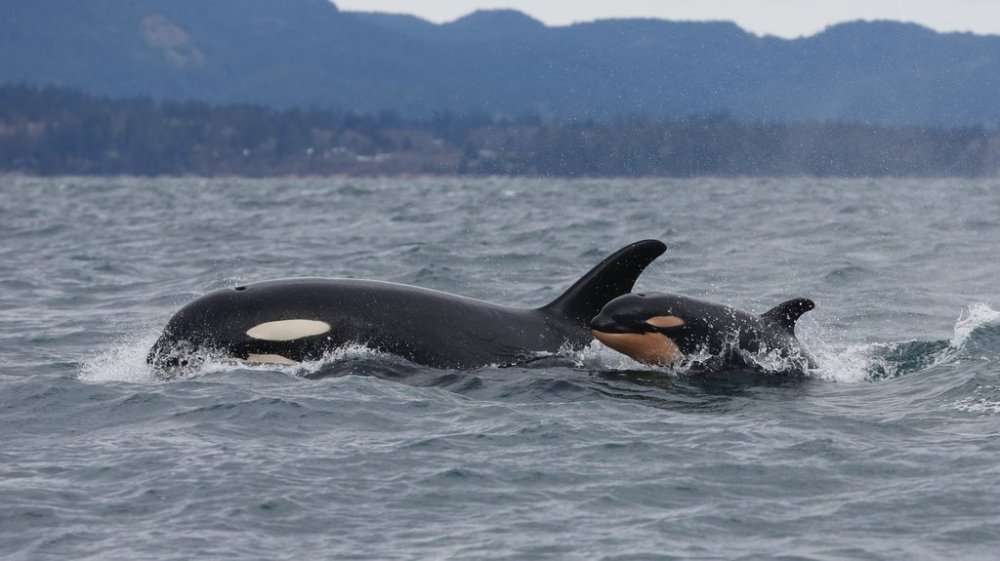Science
Southern Resident Killer Whales Face Decline Without Stronger Protections

Recent surveys reveal a concerning trend for the endangered southern resident killer whales, indicating a plateau and gradual decline in their population. According to Michael Weiss, a director with the Center for Whale Research, the absence of stronger conservation measures is contributing to their risk of disappearance. This information follows the release of an annual population survey, which highlights the challenges facing these iconic marine mammals.
The survey, conducted as of July 1, 2025, indicated that the overall population of southern resident killer whales now stands at 74, a slight increase from 73 in the previous year. During this period, researchers documented four births among the three resident pods, yet only two calves survived. The loss of an adult male from K Pod, known as K26, in late summer 2025 adds to the urgency of the situation, as this represents a significant genetic loss for a population already struggling with low genetic diversity.
Weiss pointed out that several factors are contributing to the decline of the southern resident killer whale population, including diminishing chinook salmon stocks, pollution, and increased noise from maritime traffic in their habitat along the coasts of Washington State and British Columbia. “We’re not talking about southern residents going extinct in the next five years, but we are talking about a fairly good chance of at least one of the three pods being gone within the next 50 years,” Weiss told The Canadian Press.
Challenges and Conservation Efforts
The southern residents are facing an uphill battle for survival, primarily due to their reliance on chinook salmon, which has been declining in numbers. Weiss emphasized the importance of restoring chinook habitats, particularly freshwater spawning grounds, as well as making adjustments to fisheries management. “If you’re fishing out in the ocean where everything’s mixed up, it’s really hard to avoid taking fish from these declining populations,” he noted.
K Pod, in particular, is in a precarious state, with only 14 members remaining, the lowest in the survey’s 50-year history. The reproductive success of this pod has been alarmingly low, with the last birth occurring in 2022, following a decade-long gap. Weiss stated, “What’s really concerning about K Pod is they’re just not reproducing.” In contrast, J Pod has seen a low mortality rate and is currently the only pod experiencing growth.
The survey also revealed that just 11 immature whales, those under the age of 10, represent a mere 15 percent of the population. This contrasts sharply with the northern resident killer whale population, where immature individuals make up 47 percent. The stark difference highlights the urgent need for focused conservation efforts.
The Road Ahead
Weiss articulated the need for immediate action to address the threats facing the southern resident killer whales. The combination of urbanization in their habitat and the constant presence of cruise ships and freighters complicate their hunting efforts. “They’re trying to hunt in these areas where cruise ships and freighters are coming through every day,” he explained. “It’s trying to find food on a highway.”
There are potential avenues for recovery. Restoring salmon habitats and relocating chinook fisheries away from critical habitats are critical steps that governments can take. Without these measures, the long-term future of the southern resident killer whales remains uncertain.
This report underscores the challenges faced by one of the world’s most beloved marine species. As awareness grows, the hope is that concerted conservation efforts will emerge to protect the southern resident killer whales from further decline. The data presented in the survey serves as a reminder of the fragility of this iconic population and the urgent need for collective action to ensure their survival.
-

 Science3 months ago
Science3 months agoToyoake City Proposes Daily Two-Hour Smartphone Use Limit
-

 Health4 months ago
Health4 months agoB.C. Review Reveals Urgent Need for Rare-Disease Drug Reforms
-

 Top Stories4 months ago
Top Stories4 months agoPedestrian Fatally Injured in Esquimalt Collision on August 14
-

 Technology3 months ago
Technology3 months agoDark Adventure Game “Bye Sweet Carole” Set for October Release
-

 World3 months ago
World3 months agoJimmy Lai’s Defense Challenges Charges Under National Security Law
-

 Lifestyle4 months ago
Lifestyle4 months agoVictoria’s Pop-Up Shop Shines Light on B.C.’s Wolf Cull
-

 Technology3 months ago
Technology3 months agoKonami Revives Iconic Metal Gear Solid Delta Ahead of Release
-

 Technology3 months ago
Technology3 months agoApple Expands Self-Service Repair Program to Canada
-

 Technology3 months ago
Technology3 months agoSnapmaker U1 Color 3D Printer Redefines Speed and Sustainability
-

 Technology3 months ago
Technology3 months agoAION Folding Knife: Redefining EDC Design with Premium Materials
-

 Technology4 months ago
Technology4 months agoSolve Today’s Wordle Challenge: Hints and Answer for August 19
-

 Business4 months ago
Business4 months agoGordon Murray Automotive Unveils S1 LM and Le Mans GTR at Monterey









